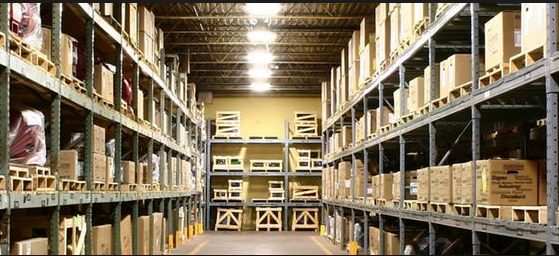A seaport or shipping port can have a lot going on in all areas of the operations, and it can get hectic trying to manage not only day to day operations, but alongside working on your goals of the port. In this post, we are going to try covering how a seaport can become more efficient and safer by installing LED seaport lights in and around their port.
The qualities that LED technology will bring to your seaport (or really anywhere) range from a reduction in energy consumption, higher quality of light (including no more flickering or buzzing fixtures), and even more cost saving benefits.
Can LED really be the way to get rid of common issues related to a lighting system, along with save money at the same time? In simple terms, yes they can. Better yet, they will not only fix those issues, but they will also fix a lot more in both technical and general terms.
What types of lighting fixtures will you commonly and most often find at ports?
Before we get into talking more in-depth about those benefits we briefly mentioned above, let's talk about what types of fixtures you will commonly find in a port. Knowing this, and being able to come back and reference them, will allow you to make better and more educated decisions related to light fixtures that directly relate to your needs. Here are those common lights we often seem to find in a port:
-
High masts (used for large areas outdoors, most commonly used high in the air)
-
Outdoor lighting (wall packs, parking lot lights, flood lights)
-
Hallway / office lighting (for any buildings you may have at the port)
Now, how about we talk about how exactly LED is going to resolve these common issues, and what it might mean for your seaport if you do decide to convert over to LED from other outdated technologies.
Less energy consumption with LED. The #1 reason why companies, ports, and really any other commercial / industrial application are converting over to LED technology in their fixtures is for this very reason; it saving them tons of money every single month. In fact, by converting to LED away from common technologies most often used in ports; you could realize up to a 75% reduction in energy usage associated with your lighting system.
This can be extremely beneficial, especially for a port which has lots of high up, and high output lights around the area. This savings allow you to realize an actual and even measurable return on investment for your upgrade. So, the main takeaway? By converting over to LED seaport lights for your lighting system; you will save some serious money all while taking advantage of the other benefits we are going to list down below...
Flickering. Have you ever been near a flickering light? If so, you probably know how annoying it can be; which seriously takes away from your concentration. This is increasingly worse when you have huge lights (such as high masts) that flicker and effect the entire surrounding area.
When you choose to convert to LEDs in any part of your port, you opt-in for no more flickering. How you ask? In non-technical terms, LEDs just were not built to ever be susceptible to this flaw. And no, not even near the end of an LED luminaires lifespan will it begin to flicker; when we say never, it really is never.
Buzzing. Buzzing fixtures can be just as annoying, and relates directly with the previous point; flickering lights. If you have ever encountered this issue at your facility and maybe even switched out an otherwise perfectly fine light; LED will not allow you to incur this issue ever again.
Overall lesser quality of illumination. Proper lighting, even seaport lighting, should never be overlooked. Not only will you miss out on energy savings related with converting to this better lighting technology; but you will also miss out on higher quality of light from your luminaires.
The biggest factor we consider when it comes to the “quality” of a luminaire is how fast it participates in “lumen depreciation.” This is basically the process of a light losing its output power throughout its lifespan. Sadly, it happens to all lights; even LED. But, the main thing to remember here is about how fast and overall how much one technology depreciates vs the next. Thankfully with LED luminaires, they depreciate at a much slower rate and overall will depreciate at much less.
For example, while a metal halide light might lose 50% of its lumen output by the time it is nearing the end of its lifespan; an LED may only lose 15%. On top of this, since LEDs last 2-3 times longer, it is even less of an issue since that depreciation is spread out over a much longer period of time.
Final thoughts
We hope this post has laid a foundation to a lighting guide for ports. Whether it is a small or large operation, the benefits your port will gain from LED will be the same; just at smaller or larger scales depending on your sizes.
The benefits far outweigh any other technology, and if you or the operations manager is ROI driver; this will be an easy decision since LEDs have a proven track record of returning a positive ROI in nearly every situation where the lights are oftenly used.
source http://my-led-lighting-guide.blogspot.com/2016/12/safer-and-more-effiecient-seaport.html

No comments:
Post a Comment